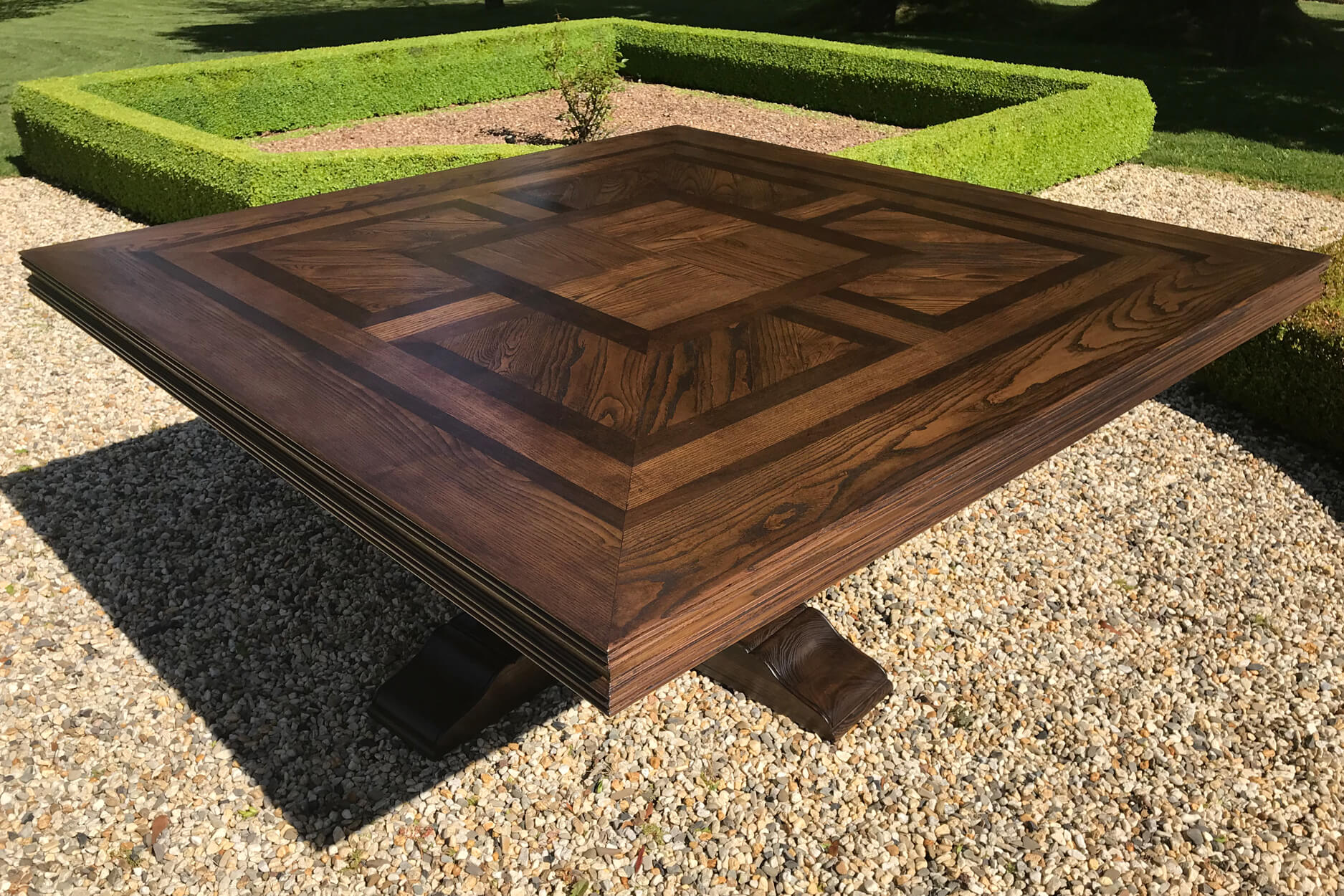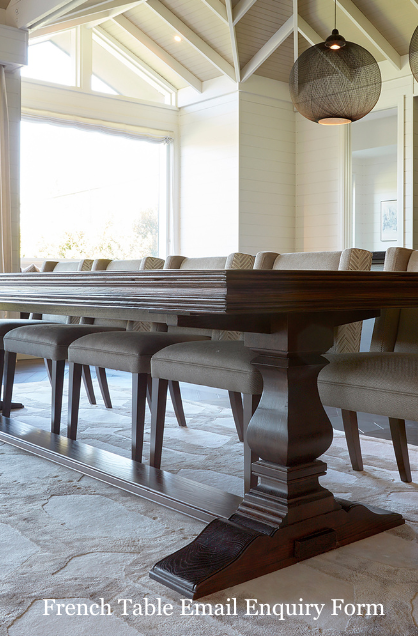French Oak Parquetry Dining Table: A Sophisticated Centrepiece for Your Dining Room
Parquetry introduces pattern and precision through timber. Rather than a flat expanse, the surface becomes a composition of carefully joined geometric shapes. A French oak parquetry dining table blends this visual rhythm with the weight and richness of European oak, offering something far more layered than a simple dining surface.
Placed at the centre of a room, it does more than hold plates and glasses. It anchors conversation, elevates mood, and ties the surrounding design together with quiet confidence.
Design Appeal: Why Choose a French Oak Parquetry Dining Table?
Parquetry adds visual depth that plain timber simply can’t. The grain moves in multiple directions, catching light differently across each section. This introduces a kind of movement—even still, the surface feels alive.
A French oak parquetry table suits a broad range of settings. In more traditional homes, it nods to heritage and craftsmanship. In contemporary spaces, French parquetry tables introduce softness and detail that balance cleaner lines. Rather than competing with other elements in the room, it offers contrast through texture.
There’s also the matter of conversation. Guests tend to notice it. They’ll ask how it was made or where it came from. And often, it becomes the most memorable piece in the space.
The Benefits of a French Oak Parquetry Dining Table
Opting for a French oak parquetry dining table offers more than just visual appeal.
French oak parquetry tables are naturally durable. Its density resists dents and daily wear better than many softer timbers. For a surface that’s used often—meals, work, celebrations—it’s a reliable choice.
A French oak parquetry table also develops a natural patina over time. The table ages with you, quietly shifting in tone and texture as the years go by. This evolution isn’t a flaw; it’s part of the charm.
Sustainability matters too. French oak is typically sourced from responsibly managed forests, often with decades-long harvesting plans that support long-term growth. If environmental impact is on your mind, this adds another layer of reassurance.
There’s flexibility in how the French oak parquetry table is made. Shapes, dimensions, finishes, and even base styles can often be selected to suit your space. Whether you prefer something round for easy flow or a long rectangular table for hosting, the design can reflect how you live.
Styling Tips for Your French Oak Parquetry Dining Table
Pairing your French Parquetry table with the right seating matters. Modern upholstered chairs can soften the lines and create a more relaxed feel. On the other hand, traditional timber chairs reinforce the table’s craftsmanship and materiality.
Think about balance in the rest of the room. Brass or matte black lighting adds a modern counterpoint. Linen napkins, stoneware plates, or textured ceramics build on the natural tone of the timber.
Underfoot, a rug can define the space—but choose carefully. A low-pile option in neutral tones won’t compete with the table’s surface, while still grounding it. Likewise, surrounding furniture should complement, not mimic, the detail of the French oak parquetry dining table.
Conclusion
There’s something quietly powerful about a French parquetry table that brings together tradition, material quality, and handmade detail. A French oak parquetry dining table does exactly that—without shouting for attention.
For those drawn to craftsmanship and thoughtful design, it’s worth exploring the work of local makers. Start with the collections by luxury interior designer and furniture manufacturer Mark Alexander, where attention to timber and proportion remains front and centre.



